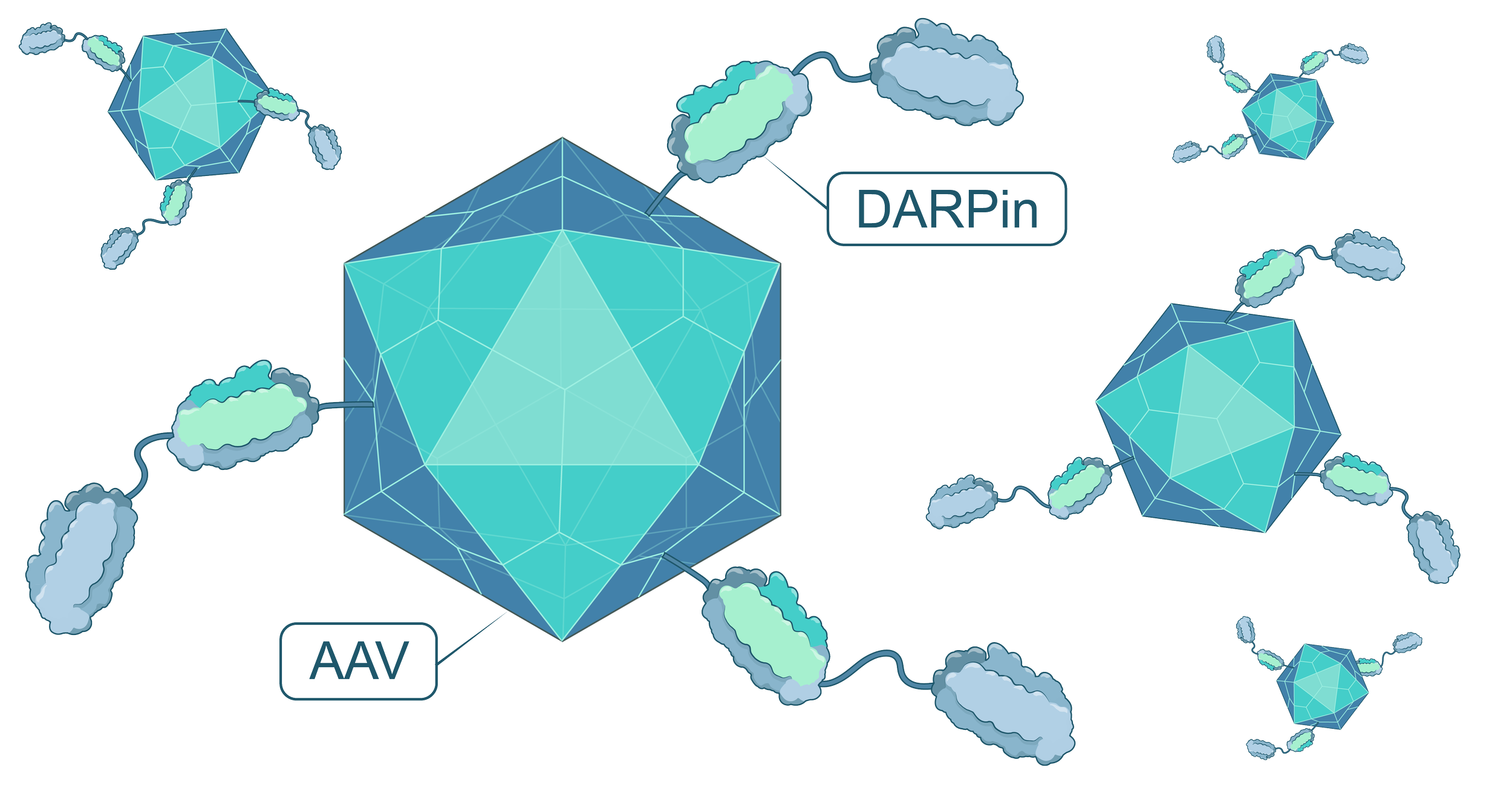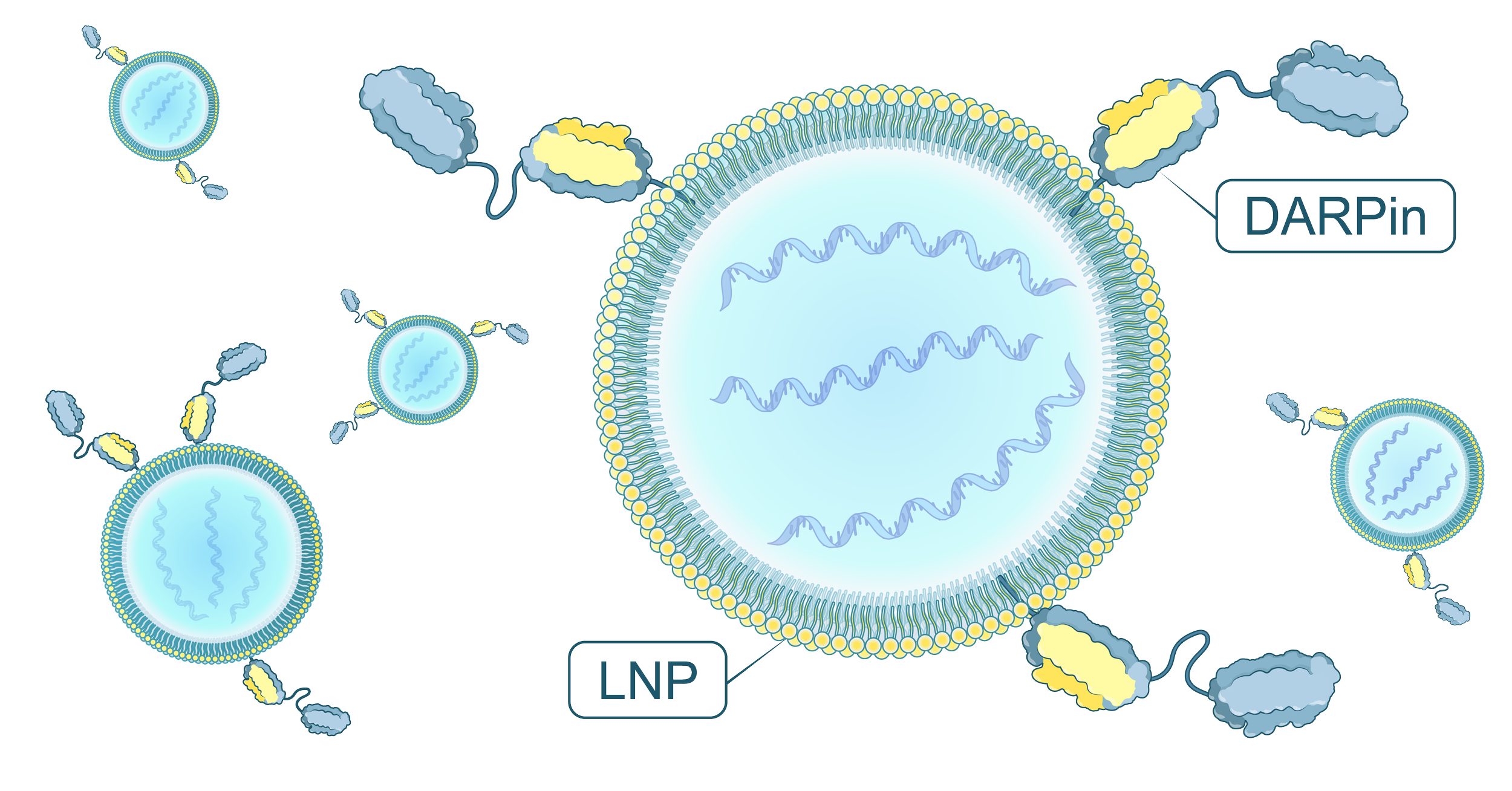Technology
Athebio seeks to bring the design and selection of DARPins to perfection. The development of our proprietary Athebody® DARPin platform, providing huge advancements in biophysical properties (Schilling J. et al. (2021) and unpublished framework improvements), has been a major leap and allows us to provide our partners with leading-edge DARPins. Athebody® DARPins offer game-changing advantages for generating superior targeted therapeutics, including high stability, small size, reliable folding, excellent target affinity and specificity, species cross-reactivity, ease of generating multi-specificity, superb developability, and good freedom-to-operate prospects. Learn more about our Athebody® DARPins in our company slide deck and get inspired by the case studies listed below on how your drug development may benefit from Athebody® building blocks.

Adeno-associated viruses (AAVs) are used in gene therapy as viral delivery systems. A drawback of AAVs that limits their applicability, however, is their natural tendency to accumulate in the liver and hence there is an urgent need to enhance uptake by other cell types. Athebody® DARPins are ideal candidates for such targeting of AAVs to other cell and tissue types. Apart from the excellent binding capabilities that are central for the targeting activity, Athebody® building blocks are extremely stable and very well folding, thus allowing for simple site-specific chemical conjugation or even genetic fusion to the AAV capsid, while retaining full binding competency.

Peptide-HLA complexes (pHLA) formed by the human leukocyte antigen (HLA) and peptides derived from intracellular proteins provide a unique targeting opportunity: They display epitopes of intracellular proteins on the cell surface, such as those overexpressed during oncogenesis, marking malignant cells for targeted therapy and thereby extending the druggable space for biologics. However, the development of such „TCR-like biologics“ also referred to as „TCR mimetics“ is extremely challenging for several reasons: Since the presentation of intracellular peptides is also common on healthy cells, and since the displayed peptides are small and only minimally different between target and off-target peptides, highly specific binding is both crucial for success and challenging to achieve. The slightly concave and rigid binding surface of Athebody® DARPins is very well suited to interact with the small and flat epitope of the HLA-embedded peptide. Athebody® building blocks thus have the potential to bind selected pHLA targets with very high specificity and high affinity, placing them in a unique position to become the preferred binding modality for targeting pHLAs, independent of the overall format (Fc-fusion, CAR-T, DARPin-only, …). Also see our pHLA slide deck for more details.

Lipid nanoparticles (LNPs) are one of the most advanced clinically approved non-viral delivery systems for nucleic-acid therapeutics and small molecules. They are typically composed of four different types of lipids, embedding the drug payload in a spherical particle. Shortly after cellular uptake, the payload is released from the endosome into the cytoplasm of the target cell. Since LNPs naturally accumulate in liver cells upon intravenous administration, there is an urgent need to enhance uptake by other cell types. Decorating the LNP surface with Athebody® DARPins as targeting moiety could facilitate selective delivery and directed uptake of payloads to cell types and tissue of choice. Since Athebody® building blocks can be chemically conjugated in a site-specific and highly efficient manner while retaining full specificity and affinity, they present ideal binding moieties for targeted LNPs.

Targeted radiotherapy (tRT) aims to deliver radiation directly to cancer cells, effectively treating the malignant cells while minimizing harm to healthy tissue. Key for the success of this therapy are binders that can precisely target tumors and withstand radiolytic damage.
In this context, Athebody® DARPins emerge as excellent candidates for fulfilling these requirements. They possess the advantageous features of small molecules, such as rapid tumor penetration, combined with immunoglobulin-like qualities like high-affinity binding and precise specificity. Notably, DARPins have a broad target space due to their rigid body binding mode and multiple DARPin domains can be easily coupled to generate multi-specific binders.
Additionally, Athebody® DARPins exhibit exceptional stability, streamlining their quick discovery, production, and translation into drugs like Radio-DARPins.
The combination of these attributes positions Athebody® DARPins at the forefront of advancing tRT, offering novel possibilities in cancer treatment.
